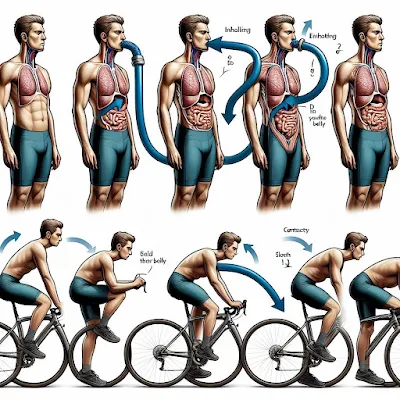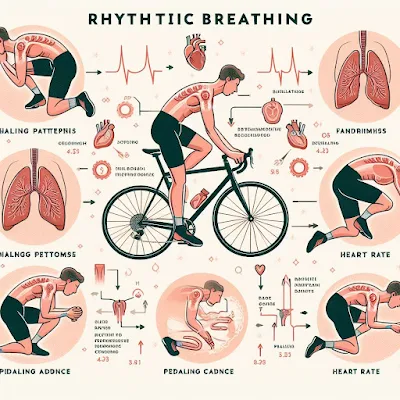Are you ready to take your cycling performance to the next level? While knowing pedal strokes and improving endurance are crucial, many cyclists overlook the importance of proper breathing techniques. Understanding how to breathe efficiently can enhance your performance, prevent fatigue, and make your cycling rides more enjoyable. In this guide, we'll explore essential cycling breathing techniques to help you maximize your potential on the bike.
The Importance of Breathing in Cycling
Before we go into specific techniques, let's discuss why breathing matters in cycling. Effective breathing not only provides your muscles with the oxygen they need to perform but also helps regulate your heart rate and maintain overall comfort during rides. By learning proper breathing techniques, you can optimize your energy expenditure, reduce the risk of cramps, and improve your overall cycling experience.
Cycling Breathing Techniques
Here are the top 5 cyling breathing techniques to adopt during your rides:-
- Deep Belly Breathing
- Rhythmic Breathing
- Contro your Breating on Climbs
- Pursed-Lip Breathing
- Relaxed Breathing
1. Deep Belly Breathing:
Begin by inhaling deeply through your nose, allowing your diaphragm to fully expand and your belly to rise. Focus on filling your lungs with air, then exhale slowly and fully through your mouth. This cycling breathing technique helps increase oxygen intake and promotes relaxation, especially during intense efforts or climbs.
2. Rhythmic Breathing Technique:
Sync your breathing with your pedal strokes to establish a rhythmic pattern. For example, inhale for two pedal strokes, then exhale for two pedal strokes, maintaining a consistent rhythm throughout your ride. This breathing technique will help you to maintain a steady cadence and prevents breath-holding, which can lead to tension and fatigue.
3. Controling Breathing on Climbs:
When tackling steep climbs or challenging terrain, adjust your breathing to match the intensity of the effort. Inhale deeply before the climb to oxygenate your muscles, then exhale forcefully during each pedal stroke to power through the ascent. Focus on maintaining a steady breathing rhythm to sustain your effort and avoid hyperventilation.
4. Pursed-Lip Breathing:
During high-intensity cycling, use pursed-lip breathing to control your exhalation and prevent rapid breathing. Inhale deeply through your nose, then exhale slowly and steadily through pursed lips, as if blowing out a candle. This cycling breating technique also helps to regulate your breathing rate and maintains optimal oxygen delivery to your muscles.
Breathing pattern in highly competitive cyclists during incremental exercise. See Case Study
5. Relaxed Breathing:
Above all, aim to keep your breathing relaxed and natural throughout your rides. Avoid shallow or erratic breathing patterns, which can increase tension and lead to decreased performance. Focus on staying calm and composed, allowing your breath to flow effortlessly as you pedal.
Incorporating Breathing Techniques into Your Rides
Now that you're familiar with above said 5 cycling breathing techniques, it's time to put them into practice. Start by incorporating them into your training rides, focusing on one technique at a time until it becomes second nature. Pay attention to how your body responds and adjust your breathing accordingly based on the intensity of your efforts and terrain.
It is pertinent to mention that by learning proper cycling breathing techniques, you'll not only improve your cycling performance but also enhance your overall enjoyment of the cycling. So, the next time you hit the road or trail, remember to breathe deeply, rhythmically, and effortlessly. Your body will thank you, and your rides will never be the same again.
Bottom Line:-
Sharing is caring! If you feel that this informaion is very useful, then please rememeber to share with others. If you have any experience, tips and ideas regarding cycling breathing techniques, feel free to comment below or post to us via email, we will happy to publish in our cycling blog.




.jpeg)